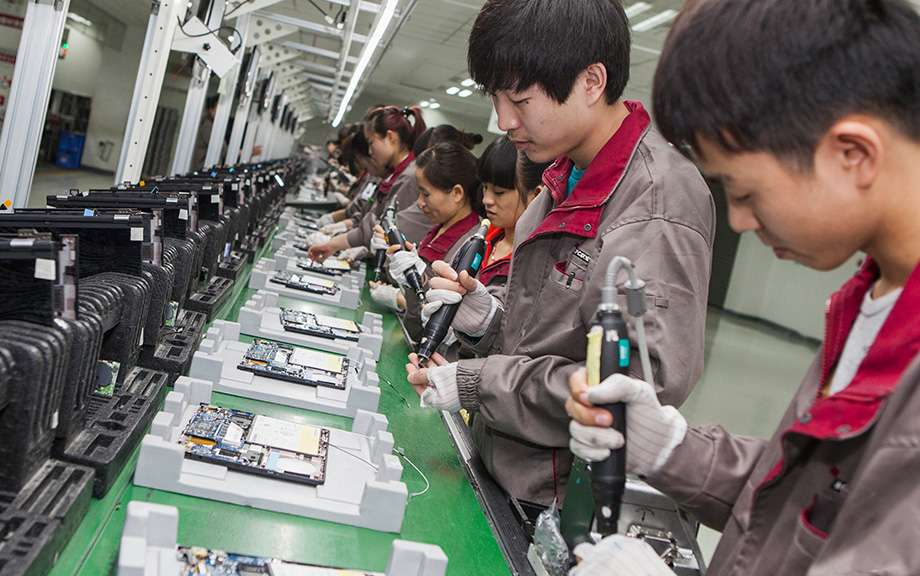Kartik Athreya on His First Year as Research Director of the New York Fed
Supply and Demand Drivers of Global Inflation Trends

Our previous post identified strong global components in the slow-moving and persistent dynamics of headline consumer price index (CPI) inflation in the U.S. and abroad. We labeled these global components as the Global Inflation Trend (GIT), the Core Goods Global Inflation Trend (CG-GIT) and the Food & Energy Global Inflation Trend (FE-GIT). In this post we offer a narrative of the drivers of these global inflation trends in terms of shocks that induce a trade-off for monetary policy, versus those that do not. We show that most of the surge in the persistent component of inflation across countries is accounted for by global supply shocks—that is, shocks that induce a trade-off for central banks between their objectives of output and inflation stabilization. Global demand shocks have become more prevalent since 2022. However, had central banks tried to fully offset the inflationary pressures due to sustained demand, this would have resulted in a much more severe global economic contraction.
Global Trends in U.S. Inflation Dynamics

A key feature of the post-pandemic inflation surge was the strong correlation among inflation rates across sectors in the United States. This phenomenon, however, was not confined to the U.S. economy, as similar inflationary pressures have emerged in other advanced economies. As generalized as the inflation surge was, so was its decline from the mid-2022 peak. This post explores the common features of inflation patterns in the U.S. and abroad using an extension of the Multivariate Core Trend (MCT) Inflation model, our underlying inflation tracker for the U.S. The Global MCT model purges transitory noise from international sectoral inflation data and quantifies the covariation of their persistent components—in the form of global inflation trends—along both country and sectoral dimensions. We find that global trends play a dominant role in determining the slow-moving and persistent dynamics of headline consumer price index (CPI) inflation in the U.S. and abroad, both over the pre-pandemic and post pandemic samples.
U.S. Imports from China Have Fallen by Less Than U.S. Data Indicate

With new tariffs on China back in the headlines, this post seeks to offer some perspective on how much China’s exports have really been affected by multiple rounds of U.S. tariffs and export restrictions over the past seven years. The key takeaway is that U.S. imports from China have decreased by much less than has been reported in official U.S. statistics. As a result, the recent tariff increase on China could have a larger impact on the U.S. economy than is suggested by official U.S. data on the China import share, especially if favorable tariff treatment for direct-to-consumer imports is ended.
How Censorship Resistant Are Decentralized Systems?

Public permissionless blockchains are designed to be censorship resistant, meaning access to the blockchain is unhampered. In practice, different blockchain ecosystem actors (such as users, builders, or proposers) can influence the degree to which a blockchain is resistant to censorship. In a recent Staff Report, we examine how sanctions imposed by the Office of Foreign Assets Control (OFAC) on Tornado Cash, a set of noncustodial cryptocurrency smart contracts on Ethereum, affected Tornado Cash and the broader Ethereum network. In this post, we summarize findings regarding sanction cooperation at the settlement layer by “block proposers”—a set of settlement actors specifically responsible for selecting new blocks to add to the blockchain.
Breaking Down Auto Loan Performance

Debt balances continued to rise at a moderate pace in the fourth quarter of 2024, and delinquencies, particularly for auto loans and credit cards, remained elevated, according to the latest Quarterly Report on Household Debt and Credit from the New York Fed’s Center for Microeconomic Data. Auto loan balances have grown steadily since 2011, expanding by $48 billion in 2024. This increase reflects a steady inflow of newly originated auto loan balances, which in 2024 were boosted primarily by originations to very prime borrowers (those with credit scores over 760) while originations to borrowers with midprime and subprime scores held roughly steady. In this post, we take a closer look at auto loan performance and find that delinquencies have been rising across credit score bands and area income levels. We also break down auto loan performance by lender type and find that delinquencies are primarily concentrated in loans from non-captive auto finance companies.
Are First‑Time Home Buyers Facing Desperate Times?

Based on recent proposals and policy dialogue, it would appear that first-time home buyers (FTB) are indeed facing desperate times. For example, in a recent Urban Institute study, Michael Stegman, Ted Tozer, and Richard Green advocate for a zero-downpayment Federal Housing Administration (FHA) mortgage. They argue that this would be a more efficient way to deliver much needed support to help households transition to homeownership given the challenges of high house prices and mortgage rates.
Discount Window Stigma After the Global Financial Crisis

The rapidity of deposit outflows during the March 2023 banking run highlights the important role that the Federal Reserve’s discount window should play in strengthening financial stability. A lack of borrowing, however, has plagued the discount window for decades, likely due to banks’ concerns about stigma—that is, their unwillingness to borrow at the discount window because it may be viewed as a sign of financial weakness in the eyes of regulators and market participants. The discount window has been reformed several times to alleviate this problem. Although the presence of stigma during the great financial crisis has been documented empirically, we do not know whether stigma has remained since then. In this post, based on a recent Staff Report, we fill this gap by using transaction-level data from the federal funds market to examine whether the discount window remains stigmatized today.
Do Payout Restrictions Reduce Bank Risk?

In June 2020, the Federal Reserve issued stringent payout restrictions for the largest banks in the United States as part of its policy response to the COVID-19 crisis. Similar curbs on share buybacks and dividend payments were adopted in other jurisdictions, including in the eurozone, the U.K., and Canada. Payout restrictions were aimed at enhancing banks’ resiliency amid heightened economic uncertainty and concerns about the risk of large losses. But besides being a tool to build capital buffers and preserve bank equity, payout restrictions may also prevent risk-shifting. This post, which is based on our recent research paper, attempts to answer whether and how payout restrictions reduce bank risk using the U.S. experience during the pandemic as a case study.
The R&D Puzzle in U.S. Manufacturing Productivity Growth

In a previous post, we provided evidence for a broad-based slowdown in productivity growth across industries and firms in the U.S. manufacturing sector starting in 2010. Since firms’ investment in research and development (R&D) for new technologies constitutes a central driver of productivity growth, in this post we ask if the observed slowdown in productivity may be due to a decline in R&D. We find that “R&D intensity” has been increasing at both the firm and industry level, even as productivity growth declines. This points to a decline in the effectiveness of R&D in generating productivity growth in U.S. manufacturing.











 RSS Feed
RSS Feed Follow Liberty Street Economics
Follow Liberty Street Economics